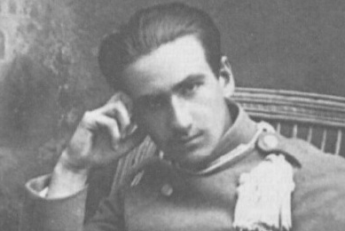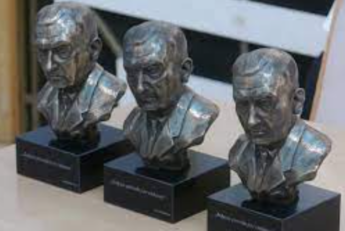
Józef Mackiewicz on sects
The Eastern Borderlands constituted a territory highly diversified in terms of religion. Orthodox, Catholics and Jews lived side by side here. There were Greek Catholics, Armenian Catholics, Old Believers, Lutherans and Calvinists, Karaites and Muslims. All these religions, despite their differences and conflicts, were something familiar, familiar, because they had existed for centuries in the eastern lands of the former Polish-Lithuanian Commonwealth. Towards the end of the nineteenth century, however, various Protestant religious groups began to appear there, and they were generally called sects. They constituted a completely new phenomenon in these lands.
Polish science has rather not become interested in this issue, unlike the Russian one. Perhaps it was due to the fact that the sects attracted mainly the Orthodox population, and therefore also mostly non-Polish. However, it was noticed by various journalists. One of them was the well-known writer Józef Mackiewicz.
He explored the phenomenon of sectarianism in depth and described it in a series of reports that he later included in “Bunt rojstów”, his debut book, published in 1938.
The reporter initially spoke with evangelical Christians, Baptists and Pentecostals, but mostly with their clergy, and each time he found out that they are people who can justify what they believe by using the Bible. Mackiewicz did not judge their doctrine from the point of view of his religious beliefs. It shows, however, that the members of the sects know it well and that it is certainly not primitive.
The author of the known religious groups did not judge negatively. On the contrary, he considered them to be communities that can positively influence social relations in the Eastern Borderlands. Mackiewicz drew attention to the fact that the literature of these religions displaced communist themes to a large extent. Besides, since the Orthodox Church in the Borderlands, after the October Revolution, not supported by tsarism, but rather disregarded in the state with a Catholic majority, had serious problems with its functioning, the sects satisfied the religious needs of a certain part of its faithful, to which it was not able or could not arrive.
The phenomenon described by Mackiewicz in the part of “Bunt rojstów” survived the Second World War. After its completion, after the Borderlands were joined to the Soviet Union, the congregations he visited left the faithful of Polish nationality, leaving for Poland within the new borders. Those who remained were joined to the Evangelical Christian Baptist Union, a union of several evangelical groups strictly controlled by the communist authorities.
Józef Mackiewicz also left, but not to Poland – to the West. He became an outstanding, albeit controversial, writer in exile. He never returned to sect-related topics. However, he was interested in religion in the political aspect. In the seventies he published two books: “In the shadow of the cross” and “The Vatican in the shadow of the Red star”, in which he accused the Church of being too submissive to communism. It can be assumed that the experiences with less official and more spiritual Christianity, which he encountered in sects before the war, made him look critically at the majority churches.
References:
Grzegorz Pełczyński, “Józef Mackiewicz and the sects”
Translated by Joanna Zawalska







